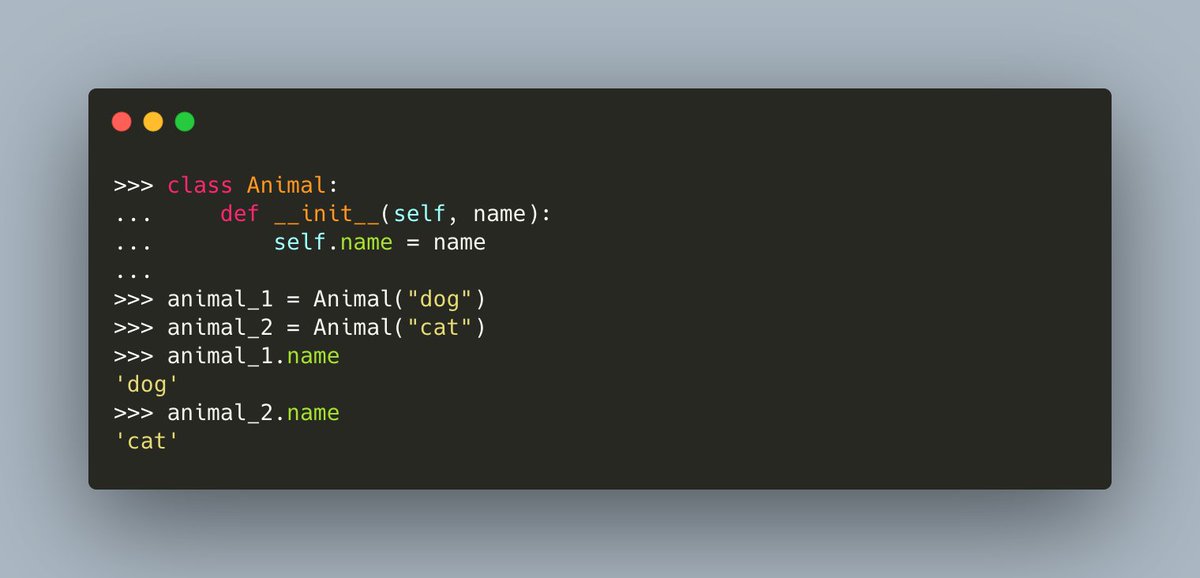
Do you know how to make a #Python class method act like an attribute?
You can do that by turning the method into a `property`
Learn how in this thread!
🧵👇🐍
You can do that by turning the method into a `property`
Learn how in this thread!
🧵👇🐍
The first step is to look at a regular #Python class.
The following `Person` class has a method called `full_name()`. To get the full name of the `Person`, you must call `full_name()`
Wouldn't it be nice if you could just use dot notation instead of calling it?
The following `Person` class has a method called `full_name()`. To get the full name of the `Person`, you must call `full_name()`
Wouldn't it be nice if you could just use dot notation instead of calling it?

In #Python, you can turn the method into a `property` using the `@property` decorator
Once you do that, you can then use dot notation to access the `full_name()` method as if it were an instance attribute!
Once you do that, you can then use dot notation to access the `full_name()` method as if it were an instance attribute!

What if you want to set the property to a new value though? I mean, in a normal #Python class, the attributes can be set by doing something like `p.first_name = "Jane"`
If you try that with the `full_name` property you will get an `AttributeError`!
If you try that with the `full_name` property you will get an `AttributeError`!

To make a property settable, you need to add a new function with a special decorator.
In this case, you have the `full_name()` decorated with `@property`
To add a setter, you need to create a SECOND `full_name()` method and decorate it with `@full_name.setter`
In this case, you have the `full_name()` decorated with `@property`
To add a setter, you need to create a SECOND `full_name()` method and decorate it with `@full_name.setter`

Let's look at another example! Here is a regular class that has a getter and setter function:
🐍 get_fee()
🐍 set_fee()
When you create a class with getters and setters, you kind of miss out on the power of Python because you can't use dot notation here

🐍 get_fee()
🐍 set_fee()
When you create a class with getters and setters, you kind of miss out on the power of Python because you can't use dot notation here


You can update the class to add a `property` by using the `property()` function.
The following is kind of a sneaky way to turn those two methods into a property without adding the `@property` decorator
The following is kind of a sneaky way to turn those two methods into a property without adding the `@property` decorator

However, in #Python, it is better to be explicit so here is the class rewrote with the `@property` applied
Now you'll be able to get and set the values using regular dot notation
Now you'll be able to get and set the values using regular dot notation

The code for most of the examples here come from one of my tutorials @mousevspython
blog.pythonlibrary.org/2014/01/20/pyt…
blog.pythonlibrary.org/2014/01/20/pyt…
I hope you enjoyed learning about #Python properties with me. If you did, retweet the beginning of this thread to share it with your friends.
• • •
Missing some Tweet in this thread? You can try to
force a refresh










